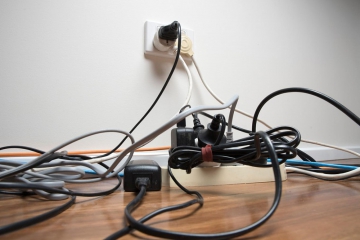Environment, health and safety (EHS) managers and their teams take great pride in the work they do to mitigate and manage harmful workplace and environmental hazards. But despite these efforts, even the best managers can find themselves faced with a problem that could have been prevented.
To maximize the success of your EHS program, it’s important to understand what EHS risk is, what it isn’t, and where you should focus your attention. Below we address some myths about EHS risk, highlight commonlwy overlooked topics, and offer insights and tips to help you avoid falling victim to both.
6 Common Myths about EHS Risk
Today’s EHS professional wears several hats, with responsibilities spanning from compliance and risk management to helping drive overall business value. To help you achieve your objectives, we’ve outlined some of the common myths that can easily undermine your efforts, as well as tips for tackling them.
1. Compliance equals prevention
In order to run a safe and effective business, regulatory compliance is an absolute must. However, simply achieving compliance with regulations (or corporate standards) doesn’t mean you’ve guarded against incidents and eliminated EHS risk. Prevention and risk management requires consistent action to identify, evaluate and implement controls to both sustain compliance and protect employees.
Tip: Develop a tailored EHS checklist for EHS managers and facility managers to keep compliance priorities accessible and top of mind.
2. “Low risk” means “no risk”
When programs are running smoothly, and incidents are few and far between, it can be tempting to assume the trend will continue—especially at lower-risk facilities such as offices, labs, data centers, warehouses or retail stores. But the reality is that every workplace comes with its own unique risks.
Tip: Make sure your EHS program is tailored to the unique needs of your facility to ensure employee safety and productivity. When your EHS program is designed to meet employee and customer expectations, it can also help protect your brand’s reputation.
3. Long-time employees don’t need more training
Your long-time employees are likely your company’s most skilled and loyal workers. But it’s unlikely they are working under the same conditions and regulations as they did when they joined your company. As a result, their knowledge and understanding of relevant EHS topics may be outdated or non-existent.
Tip: Make ongoing training of all employees a top priority and a recurring investment. This will ensure that all employees are at the same level of knowledge and understanding, as well as show them you care about their well-being.
4. Supervisors are the only employees with the authority to stop work
There are no laws or regulations barring non-supervisors from stopping work due to safety concerns. However, many employees feel they do not have the authority or power to stop work or speak up, often relying on supervisors to decide what is and is not safe. In fact, 45% of employees don’t feel comfortable pointing out potentially unsafe behaviors, according to Antea Group’s research.
Tip: Strive to make EHS an integral part of your company culture. By doing so, you’ll show employees that their happiness, health and safety are priorities—leading to higher productivity and a more proactive approach to minimizing risk.
5. Being safe requires a lot of time and money
While investing in a safe and empowered workforce certainly requires time, money and resources, not investing can prove far more costly. Fines for noncompliance, employee turnover, workers’ compensation payouts, and damage to your company’s reputation are just a few of the costly consequences your company could experience when EHS isn’t made a priority.
Tip: Partner with an EHS consulting firm to develop an EHS program that matches your company’s unique needs. An EHS consultant brings broad-based knowledge and expertise to the table, and is an economical option for companies that lack internal expertise or resources.
How are companies across industries overcoming EHS obstacles and reducing risk? Learn how five global companies tackled EHS challenges with the help of Antea Group and our global partners.
Want more news and insights like this?
Sign up for our monthly e-newsletter, The New Leaf. Our goal is to keep you updated, educated and even a bit entertained as it relates to all things EHS and sustainability.
Get e-NewsletterHave any questions?
Contact us to discuss your environment, health, safety and sustainability needs today.





